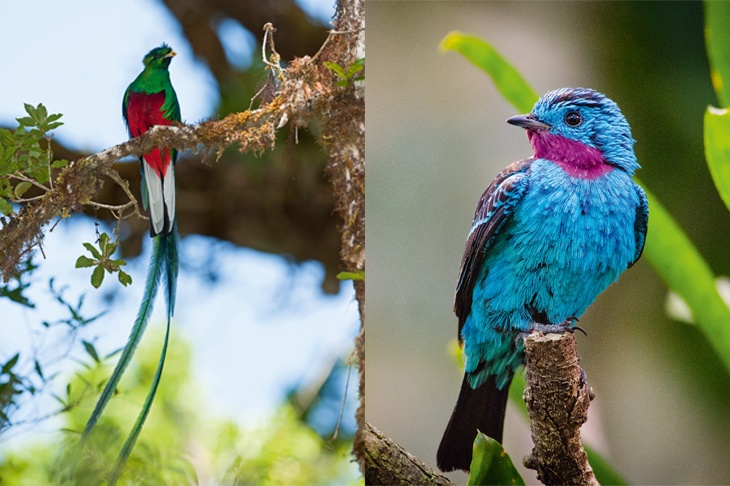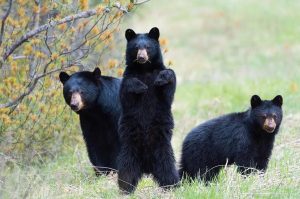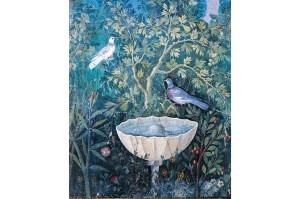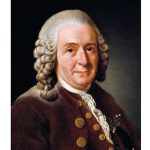They don’t look like a natural pair. First there’s the author, Kirk Wallace Johnson, a hero of America’s war in Iraq and a modern-day Schindler who, as USAID’s only Arabic-speaking American employee, arranged for hundreds of Iraqis to find safe haven in the US. In the process, he developed PTSD, sleepwalked through a hotel window, flung himself from a ledge and plunged, nearly, to his death. Then there’s the stranger-than-fiction Edwin Rist, a brilliant young flautist who, on a pitch-black night nine years ago, in pursuit of an obsession with rare bird feathers, risked years in jail in one of the most brazen and bizarre museum heists ever accomplished. Yet Johnson and Rist are made for one another. Within pages I was hooked. This is a weird and wonderful book.
On the evening of 23 June 2009, Rist, then a 20-year-old Royal Academy of Music student who hoped one day to play principal flute for the Berlin Philharmonic Orchestra, performed in a concert of Haydn, Handel and Mendelssohn. Then, having taken his bows, he gathered wire-cutters, an LED torch, latex gloves, a diamond-blade glass cutter and what must have been a tardis of a wheely suitcase, and caught a train to Tring in Hertfordshire. From the station, he walked to the Natural History Museum, once the private repository of Walter Rothschild, the highly eccentric second Lord Rothschild, who rode about in a carriage pulled by zebra. Gifted to the nation in 1937, the museum is home to one of the finest collections of stuffed mammals, ornithological specimens, reptiles and insects in the UK.
Breaking a window, Rist hoisted himself into the museum. He had originally planned to be swift and selective, but as he began to fling open the white steel cabinets of dead birds he was seduced into a kind of feeding frenzy. It would later be some small comfort to the museum curators that Rist bypassed Darwin’s sizeable collection of finches, and the skins and skeletons of the Dodo and the Auk, concentrating instead on birds that appeared more colourful and exotic: Resplendent Quetzals, gathered in the 1880s from the Chiriqui cloud forests of western Panama and nearly four feet in length; 14 skins of the Lovely Cotinga; 37 Purple-Breasted Cotinga; 21 Spangled Cotinga; 37 Birds of Paradise; 24 Magnificent Riflebirds; 12 Superb Birds of Paradise; four Blue Birds of Paradise; 17 Flame Bowerbirds, and so on. When he finally dragged himself back outside, there were 299 birds stuffed into his suitcase.
Many of the birds Rist had stolen had been collected by one very remarkable man: Alfred Russel Wallace, a self-taught naturalist from a humble background who, in the mid-19th century, worked his way deep into the gloomy forests of the Malay Archipelago, hunting down mammals, reptiles and birds, funding his expeditions by selling off duplicate skins. He lived on a diet of alligator, monkey and turtle, and was prey to malaria, vampire bats, serpents and pirates, all the while collecting creatures of otherworldly beauty, many of which had thrived undiscovered by human beings for more than 20 million years.
Killing birds in pursuit of the study of natural history has, perhaps, some justification. But in the wake of Wallace’s discoveries came a late-Victorian rage for incorporating them in women’s fashion. In what became known as the Age of Extermination, hundreds of millions of birds — parrots, toucans, quetzals, snowy egrets, ospreys — were killed mainly, though not exclusively, to adorn hats. One merchant peddled a shawl made from 8,000 hummingbird skins.
As the birds’ numbers dwindled, they became worth more than their weight in gold. When the Titanic went down in 1912, the most valuable and highly insured commodity in its hold was 40 crates of feathers. Not surprising, then, that when Rist hurried back towards Tring station, he was carrying $1 million worth of feathers. He had been in the museum three hours. The security guard, glued to a football match, had failed to notice the alarm indicator blinking.
Johnson is a master of pacing and suspense. We learn the details of Rist’s crime at the very beginning of the book, but for a good few chapters we are kept wondering whether he’ll be caught, and, if so, how; whether Johnson will get to meet him, and whether he is now behind bars, or out free in the world playing his flute.
The other burning question, of course, is what inspired such an outlandish crime. Edwin Rist was brought up in Claverack, a small town north of New York City, and home-schooled by parents who bred labradoodles for a living, and who devoted themselves to nurturing enthusiasms in their two sons. Edwin was just 11 when he caught by chance on television a demonstration of how to tie a fly for trout fishing. He was instantly captivated — and very soon as preoccupied with fly-tying as with his flute. He befriended a retired ornithology professor willing to sell him bird skins on the cheap. A zookeeper at the Bronx Zoo sent him feathers from the autumn moult of the Macaw, Spoonbill and Tragopan. He took a job chopping logs to fund his new addiction, but the rarest, most gorgeous feathers — and therefore the most elaborate flies — remained, financially, out of his reach. Meantime, what had begun as a hobby had become an obsession.
Over the internet, Rist became part of a shady ‘feather underground’, a community of (all-male) fanatics who had no interest whatsoever in fishing — ‘People don’t actually fish with this shit, right?’ one tells Johnson — but who would go to almost any lengths to lay their hands on exotic feathers to tie flies. ‘God, Family, Feathers’ was the motto of one, while another described fly-tying as ‘like a drug, nothing else matters, nothing else compares’.
Rist’s new cronies were a disparate lot: a blacksmith, a retired detective, a dentist (what is it with dentists and endangered creatures?). But they had in common a breathtaking hubris: a belief that they could slice apart some of the most beautiful creatures in the natural world, and put them back together to make something more beautiful still. Dyed feathers just wouldn’t do. ‘The knowledge of the falsity eats at you,’ Rist tells Johnson when they finally meet for an eight-hour hall-of-mirrors encounter during which Rist tries to persuade Johnson that he is not a thief, and that by snatching the Tring birds he was actually saving the lives of birds in the wild.
And how did Johnson become so obsessed with Rist? As he struggled to overcome his PTSD, he took up fly-fishing as a therapy. One day, as he stood waist-deep in a river in northern New Mexico, his fishing guide told him of Rist’s crime. Johnson knew nothing of rare birds or salmon flies, and had no experience of tracking thieves; but, like Rist himself, he became fixated — as tenacious in his pursuit of truth and justice as any fly-tyer in pursuit of feathers. His ambition: to find out whether it was really possible that Rist worked alone, and to restore to Tring all 299 of the stolen birds.
There’s no great climax to this tale, but it’s a tribute to Johnson’s storytelling gifts that when I turned the last page I felt bereft. The odd, but obvious, solution? To seek out his first book, To Be a Friend is Fatal, a memoir of the Iraq war.


















